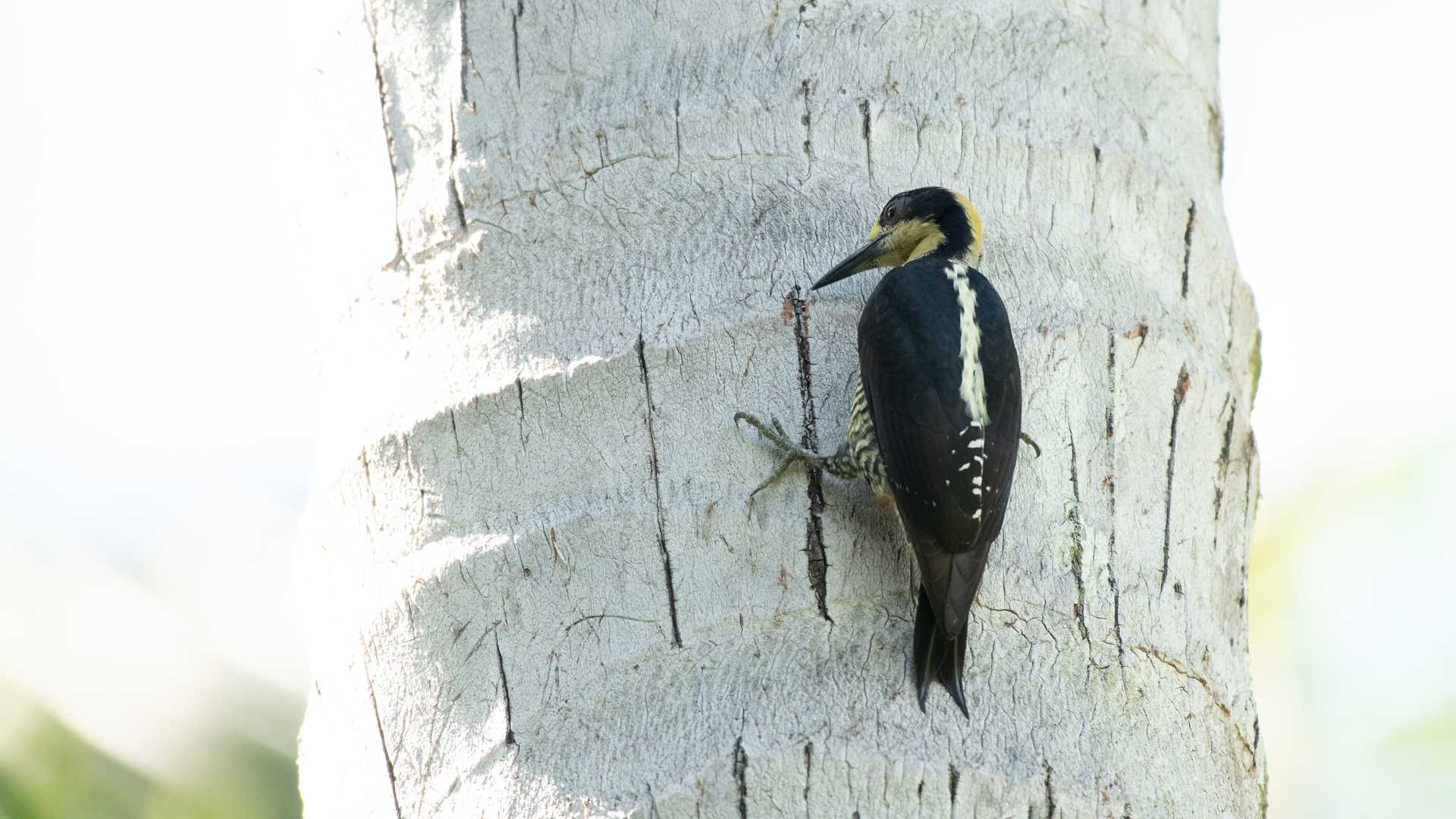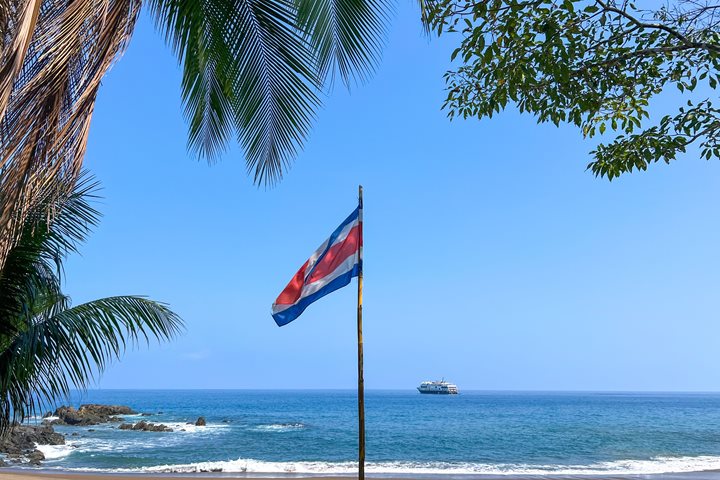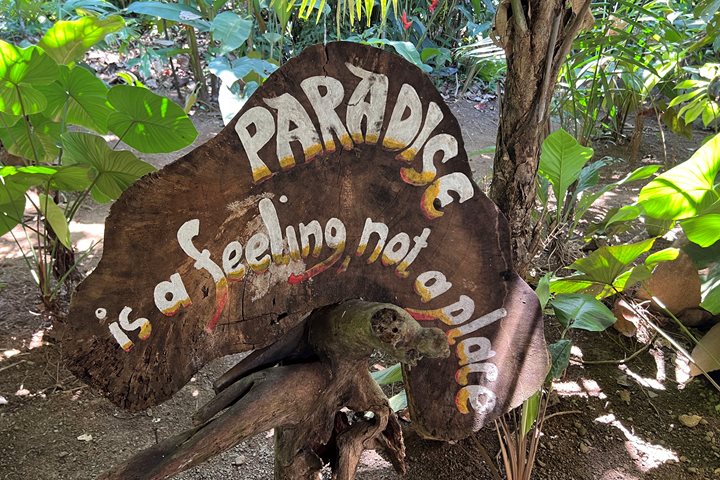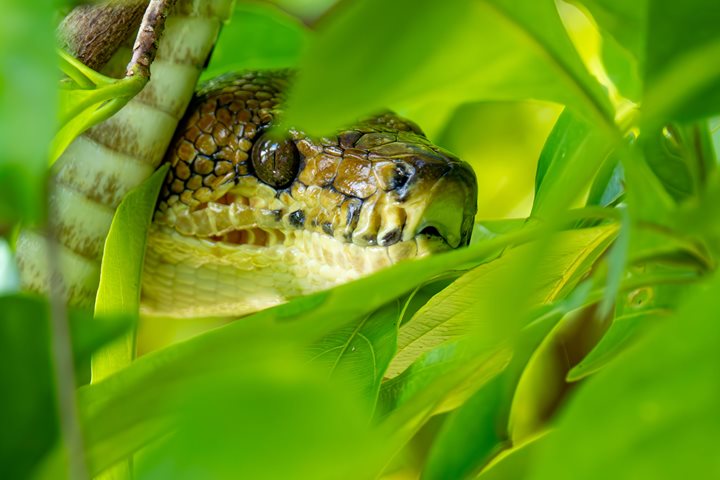After a long navigation, National Geographic Quest calmly entered Costa Rican waters in the early morning. We docked at Golfito, the port of entry to our new destination, Costa Rica. Boosted by the tourism industry, the town now features small boutique hotels, private marinas and the headquarters for many tours around Golfo Dulce.
Morning activities took place by kayak or by Zodiac. We explored the tropical mangrove ecosystems that protect fish life in addition to helping preserve tropical forests. The scarlet macaws, toucans, parrots, woodpeckers and ibises were amazing, and the highlight of the outing was the Central American squirrel monkey! The smallest species of monkey in the country, the squirrel monkey has very little geographical range. We were lucky to see it again in the afternoon.
After spotting large green iguanas, we headed to our next destination. Golfo Dulce is a majestic site, and we visited a protected preserve. The walk covered a riverbed, mature rain forest and a fruit orchard. We spotted incredible birds, like the great curassow, a species found only in healthy tropical forests. A beautiful sunset preceded a tropical storm. The weather is constantly changing in the tropics.







